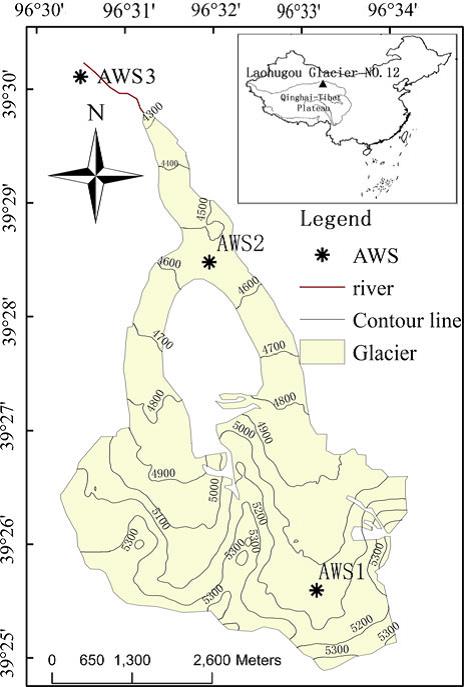Scientists Reveal the Effects of Clouds on Surface Melting in Western Qilian Mountains
Updatetime:2018-03-29From:
【Enlarge】【Reduce】
In recent years, global warming has drawn more and more attention of glaciologists owing to its strong impact on glacier change. However, there are many other variables that affect the accumulation and ablation of glaciers, including air temperature, precipitation, debris cover, cloudiness, surface impurities, wind, humidity, radiation, surface slope, etc.
Clouds have significance effects on continental glaciers, especially in many high-altitude mountainous regions. The cloud/radiative interactions there are very complex in high-altitude mountainous regions, owing to low temperatures, water vapor content, and the presence of the highly reflective and inhomogeneous snow/ice surfaces and multilayered clouds.
Moreover, magnitudes of other meteorological variables vary with cloud cover. Therefore, detailed knowledge of the effects of clouds on glacier melt is very important. However, most studies of cloud effects focused on maritime or Arctic glaciers, but little is known about the effects on continental and high-elevation glaciers.
Recently, scientists from the Northwest Institute of Eco-Environment and Resources of Chinese Academy of Sciences, together with their colleague from Shandong Normal University, investigated the radiative properties of clouds in western Qilian Mountains through their shortwave transmissivity and longwave emissivity, and quantified the cloud effects on radiation and meteorological variables and glacier melt.
The research shows that clouds can alter the magnitude and nature of incoming shortwave radiation from shortwave radiation incident at the top-of-atmosphere and increase the proportion of diffuse radiation. Similarly, clouds can dramatically enhance the ability of the atmosphere to radiate longwave radiation.
In this research, scientists also focus on the effects of clouds on other meteorological parameters and on glacier melt. On an average, `18% of top-of –atmosphere shortwave radiation was attenuated by the clear-sky atmosphere, and clouds attenuated a further 12%.
Air temperature and wind speed related to turbulent heat flux were found to suppress glacier melt during cloudy periods, while increased water vapor pressure during cloudy days could enhance glacier melt by reducing energy loss by latent heat.
In addition, compared with glaciers in maritime climates, those in a continental climate are inclined to melt less under cloudy skies. However, this pattern may change as global temperatures rise and therefore needs further attention.
This research has been published on the Journal of Glaciology in an article entitled “Effects of clouds on surface melting of Laohugou glacier No. 12, western Qilian Mountains, China”.

Map of Laohugou glacier No. 12 showing AWS locations. Contour are at 100 m intervals.
Contact
KANG Shichang
Email: shichang.kang@lzb.ac.cn
State Key Laboratory of Cryospheric Sciences, Northwest Institute of Eco-Environment and Resources, Chinese Academy of Sciences, Lanzhou, 73000, China.
Appendix




